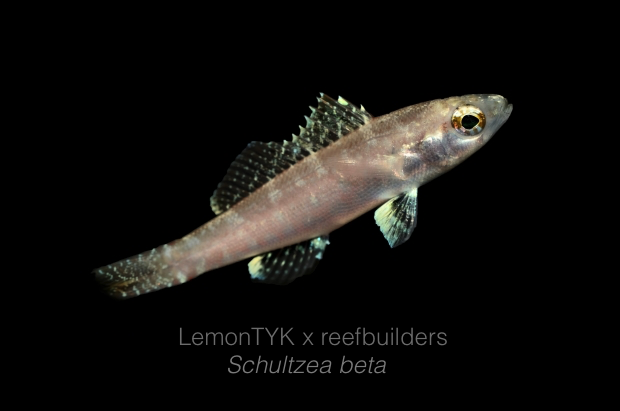Our second series of deepwater Curacao fish aims to shed light on two very unorthodox aquarium offerings. The waters of the Atlantic are home to a smorgasbord of basslets, and it is no doubt that the family Serranidae attains maximum development here with a plethora of genera each with its own set of unique species. Schultzea and Parasphyraenops may not be the most colourful or breathtaking, but they’re unique and offer another level of dimension especially if you’re into replicating biotope style set ups.

Schultzea is a small genus that is superficially very similar to Parascphyraenops, but can be differentiated easily based on a few set of unique morphological features. In Schultzea, the dorsal fin is only slightly notched between the spinous portion of the dorsal fin and the soft rays. It possesses ten dorsal spines and eleven to twelve soft rays, which starts quite far back from the dorsum. The genus contains no teeth on its upper jaws, and all the species share the same basal colouration of orange-brown.
S. beta is the only member offered to the trade, and possesses two to three horizontal stripes on top of its usual body coloration. The fins are clouded with irregular bluish spots and the tail is transluscent yellow. While the fish may not look like anything spectacular, its small size and unique schooling behaviour offers a wonderful breath of fresh air for Serranid lovers.

Schultzea beta is unusual in being a gregarious schooling species often found hovering above substrate in fairly deep waters, where it is very much associated with. The behaviour and swimming style can be loosely compared with Apogon, and is what gives the species its common name of Schooling Basslet. The species is planktivorous and like most Serranids, are synchronous hermaphrodites. For a biotope style Caribbean set up, a small group of these fish would provide a wonderful and interesting addition, showing the more seldom seen and diverse offerings that the Atlantic has to give.

In Parasphyraenops, P. incisus is similar to S. beta but the dorsal fin is more deeply notched giving the appearance of a split double dorsal. The fin comprises of ten spinous rays and ten soft rays and the upper jaw unlike Schultzea has one row of small teeth. The posterior spiny portion of the dorsal fin possesses a large white margin and a few indistinct spots, and the pale body is decorated with two transverse bands that end as spots in the caudal peduncle. The juvenile specimen above does not show these traits very well, but a quick search on google should provide better images of the species.

Also known as the Bantam Basslet, P. incisus like S. beta stays small and peaceful, preferring to hover above substrate and picking floating morsels as they float by. They are however not usually found in groups, and prefer swimming individually over steep slopes or vertical faces. Although not colourful in itself, the fish does look unique when fully matured, with an orangey-brown body coloration, horizontal banding and a constellation of white flecks.
Schultzea beta and Parasphyraenops incusus may be chromatically challenged, but their unique morphology and behaviour would make for highly interesting additions to any Caribbean style display and will compliment some of the more colourful species nicely. They most definitely will not hog the limelight for being the most beautiful, but their presence will for sure add a natural feel and a deeper more complex dimension to the offerings of the Atlantic. Both species are exclusively offered by Dynasty Marine.



